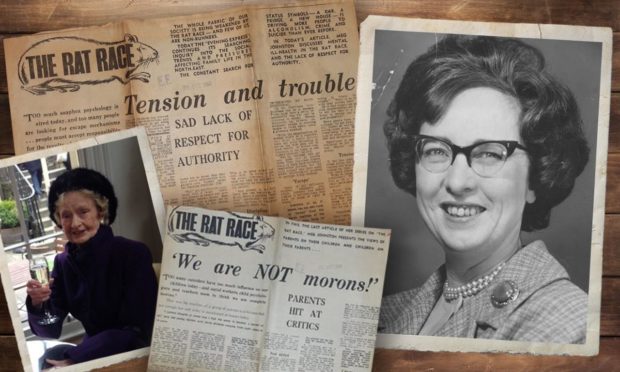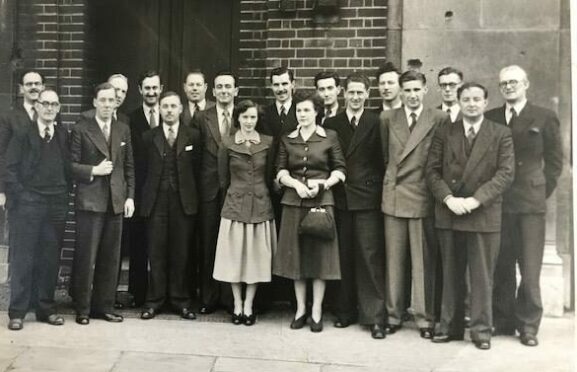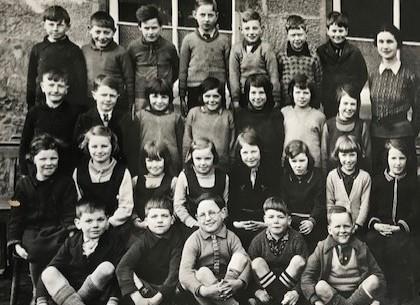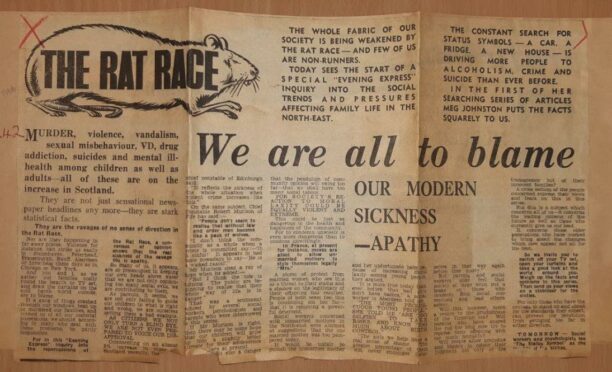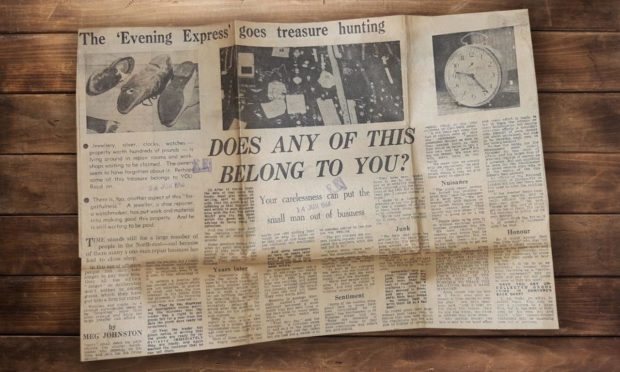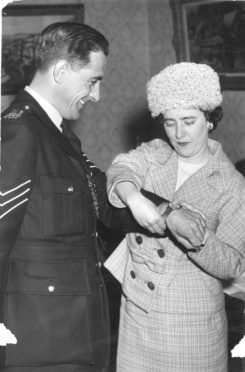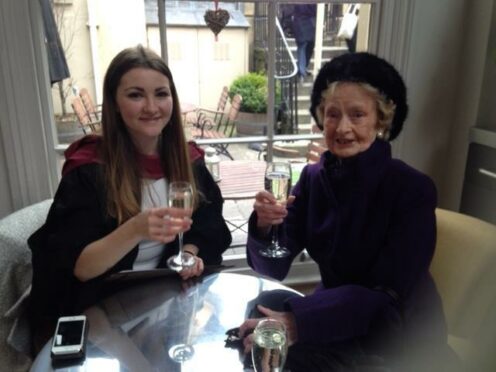Her CV would be impressive by today’s standards.
With a commissioned biography under her belt, and bylines in Scotland’s biggest newspapers, former Press and Journal and Evening Express journalist Margaret Johnston blazed a trail for other female reporters to follow.
But what’s even more remarkable is that as one of only two women in a newsroom full of men, she also campaigned for, and won, equal pay… and she did it all in the 1940s.
We reflect on the remarkable life and career of writer and broadcaster Meg Johnston.
A move to Stonehaven
Born in Bonnybridge near Falkirk, to Daniel, a railway signalman, and Christina Fleming (nee Miller), Meg moved to Stonehaven at the age of six.
She was the last of five children for the couple; the younger sister of Susan, Anna, Daniel and Tom.
She attended Fetteresso School then Mackie Academy where she excelled in English and French, and was particularly fond of drama and dance.
Despite her dad’s encouragement to read law at university, Meg opted for a day release programme from Gregg Commercial School in Aberdeen so she could train as a journalist on the job, with supplementary lectures.
The start of an impressive career
Working for the Kemsley Newspaper Group, Meg was a 17-year-old trainee under its ‘editorial plan’.
With the occasional lecture in London, and social history, politics and economics taught in Aberdeen, she began her career with the Weekly Journal in 1946.
From 1950-52 she reported for the Press and Journal and Evening Express, where she would often write under the name Kirsteen.
Being based in the city also had other advantages, one being the ideal place to meet your future spouse.
Married – and working – life
Her daughter, Beverly said: “My mum met my dad when he worked as a wireless operator in Aberdeen. He used to play piano and mum loved to sing. They met through her sister’s boyfriend.”
In 1951, Meg married William Alexander Johnston in South Church, Stonehaven.
Their first home was a flat in Union Street where Meg could run across the road in the morning to the newsroom and where William was close to his new job in the police.
By 1952 she was really making a name for herself, taking on the role of Women’s Editor.
Freelancing and feature writing
Her only real career pause was in 1957 when the couple welcomed their daughter Beverly into the world.
And even then Meg began work as a freelance writer.
During this period she received a commission to write the biography of Sir Thomas Mitchell, the Lord Provost of Aberdeen.
Published in 1960, Ninety Wonderful Years, was one of her proudest achievements.
Public relations and a relocation
From 1960 to 1964, Aberdeen and District Milk Marketing Board offered her a chance to try her hand at public relations.
But the Evening Express was still in her sights.
Just as she was becoming established as a feature writer for the evening paper, writing hard-hitting pieces on humanising hospital care and an investigative series called The Rat Race, her husband was transferred to Lanarkshire.
The article started with no shortage of indignation: “The whole fabric of our society is being weakened by the rat race and few of us are non runners. Today the Evening Express continues its searching inquiry into the social trends and pressures affecting family life in the North-east.
“The constant search for status symbols – a car, a fridge, a new house – is driving more people to alcoholism, crime and suicide than ever before. In today’s article Meg Johnston discusses mental ill-health and the lack of respect for authority.”
New opportunities
“My dad – then known as Sergeant Johnston – was becoming well known in the Aberdeen area for his role within road safety. He was often on the TV and radio.
“When he got transferred to the Hamilton area mum of course went too,” said Beverly.
But Meg wasn’t short of work despite being in a new area.
From 1966 until 68 she wrote for the Hamilton Advertiser, Motherwell Times, Bellshill Speaker and the Evening Times in Glasgow.
A change of direction in 1969 saw her take on a role as an agricultural journalist at the Scottish Farmer before working from 1970 until 1975 on a part-time basis for a local authority newspaper.
In the late 1970s Meg would once again work in public relations, this time for Hamilton District Council as well as becoming a freelance broadcaster for the BBC and regular contributor to the Glasgow Herald and Scotsman newspapers.
Yorkshire calling
Beverly said: “Dad got another promotion and in 1976 they moved to West Yorkshire.”
As had become her custom, Meg began working for the local papers.
The Wakefield Express appointed her Features Editor.
In 1986 she and her husband, William started their own PR company called Johnston Fleming PR.
But in 2006 William sadly passed away.
“Mum continued after she retired to write critiques for the Harrogate Writers group. She was as passionate about her craft then as she was when she started.”
She leaves behind her only daughter Beverly Kerr, and son-in-law John, grandson Andrew and granddaughter Amelia.
